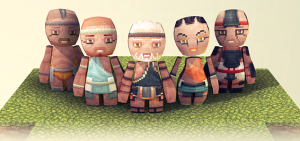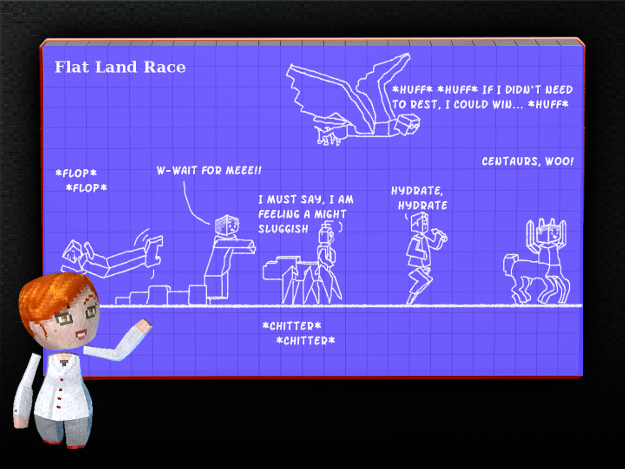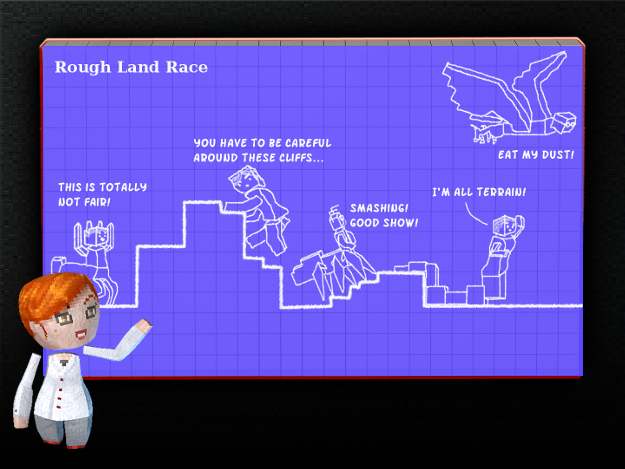
For our next series, we’re going to talk about the different creature types you can play, as well as creatures you can encounter in Imagine Nations. This time, we’re talking about the “locomotion” part of a character’s body.
These hooves were made for walking…

Locomotion parts are basically the legs on a humanoid creature, but they’re not the only sort of locomotion part you’ll be able to play with in Imagine Nations. Players can also play as centaur-like beings with quadrupedal hooved locomotion parts, or with a burrower biped or quadruped’s legs for mole-like creatures, with giant-insect-like legs, abdomen and thorax, with serpentine tails, or even bird wings or mermaid-like fish tails. (Not that players need to have humanoid upper bodies, either. Rather than a “mermaid”, you might just be a type of fish with prehensile fins.)
These parts can play more than just an aesthetic role – they fundamentally change how the players and cultures interact with the world:
Hoofed quadrupeds, with lower bodies like a horse, would have an advantage in open plains. Such creatures may have a speed advantage on flat terrain, and better “dashing” mechanics, plus possibly affinities to charge attacks. However, such creatures may also be larger than bipedal humans, making housing more costly in space and resources, and making mining out shafts large enough for your character take longer. They may also find it impossible to climb cliffs, and find jumping without a running start much harder. Hoofed quadrupeds might float well, but have trouble diving in water, and not travel very quickly over sea, as well. Hence, cultures of hoofed creatures would naturally be suited to flatlands, but have difficulty elsewhere.
Comparatively, a serpentine-like race may move slowly over flat terrain, but have the ability to much more easily climb cliffs and walls and the ability to deal with swampy terrain or swim quite well. Cultures featuring serpentine locomotion may be better-suited to the mountains, swamps, or caverns where other creatures that can travel more quickly on level ground can’t perform as well.
Not entirely Freebird

Fliers may seem to have an overwhelming mobility advantage, but that doesn’t mean we would give them unlimited mobility. Flight for a winged creature may cost those creatures stamina as long as they keep flapping their wings, making flight more short-ranged, and fliers may be more awkward on land than other types of creatures. Fliers need light bodies, so they may suffer penalties to stats relating to bulk, and have to carry light equipment loads if they want to fly. Flight also burns energy enough to require greater food consumption. Those wings are probably not going to help in cramped cavern spaces, either – you need to fully stretch those wings to fly, and caves leave no room for maneuvering. Hence, they may stick to the open-air, and leave the caves to the mole-type-people.
An aquatic being, meanwhile, may have more trouble getting around outside of water. However, in water, they will have not only more freedom of motion, but may also be more capable of subsisting on lower quantities of food than bird-like creatures. Some types of aquatic creatures may be amphibious, but that might come at a cost of not being able to breathe water forever, and rely upon diving and returning to the surface.
Insect-like or lizard-like locomotions may be good for climbing or flat terrain, but terrible at swimming.
No matter what choice you make, it’s a weighty one, and there aren’t obvious “right” answers. Cultures have significant differences based upon how they move around, and it can shape the nature of political boundaries to have winged cultures claim the mountains while centaur culture empires dominate the plains between those mountain ranges.
Let Me Borrow Your Wings
A culture and a player isn’t entirely stuck with the choices they made in terms of locomotion, however. Just as humanity as travelled by sail, wheel, and wing of mechanical nature in real life, cultures will have access to scientific and magical technologies that can let them overcome weaknesses. This may mean flying machines or flight spells or even just plain polymorphing into a bird. A mer-person may be amphibious, but for a land-dweller to get down to them, they may cast a spell to grow fins and gills.
Of course, it’s a matter of finding the means of doing so – spells to grow gills may be more difficult to come by than SCUBA gear, and spells need to be “researched” like technology. Having technology and spells doesn’t mean they’re so convenient as to eliminate all your differences, either. Spells can have durations or reagents that are limiting, and technologies may not be without drawbacks, not the least of which being bulk and resource cost.
- The Imagine Nations Team
Support Imagine Nations the game starting at $15. Earn Backer’s Access and other rewards on our crowdfunding campaign.


col
What about Giant Robots? can You be a Giant Robot?